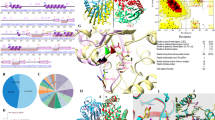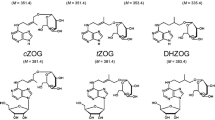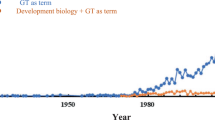Abstract
GOSSYPOL, a toxic phenol, occurs primarily in the resin glands of cotton seed but also has been isolated from the tap-root bark of the cotton plant1. A study of the distribution of gossypol in the cotton plant revealed that the roots, especially the feeder roots, contained high levels of gossypol. This was true for strains of cotton in which the plants and seed were free of resin glands as well as for strains which contained many glands in plants and seed. The high levels of gossypol in the roots and the minute amounts in the seed of the glandless plants suggest that the gossypol was synthesized in the root tissue.
This is a preview of subscription content, access via your institution
Access options
Subscribe to this journal
Receive 51 print issues and online access
$199.00 per year
only $3.90 per issue
Buy this article
- Purchase on Springer Link
- Instant access to full article PDF
Prices may be subject to local taxes which are calculated during checkout
Similar content being viewed by others
References
Royce, H. D., Harrison, J. R., and Hahn, E. R., Oil and Soap, 18, 27 (1941).
Robbins, W. J., Bot. Gaz., 73, 376 (1922).
Robbins, W. J., Amer. J. Bot., 28, 216 (1941).
Dawson, R. F., Amer. J. Bot., 29, 813 (1942).
Smith, F. H., J. Amer. Oil Chemists' Soc., 35, 261 (1958).
Author information
Authors and Affiliations
Rights and permissions
About this article
Cite this article
SMITH, F. Biosynthesis of Gossypol by Excised Cotton Roots. Nature 192, 888–889 (1961). https://doi.org/10.1038/192888a0
Issue Date:
DOI: https://doi.org/10.1038/192888a0
This article is cited by
-
Transcriptome analysis reveals the effect of grafting on gossypol biosynthesis and gland formation in cotton
BMC Plant Biology (2023)
-
Gossypol and related compounds are produced and accumulate in the aboveground parts of the cotton plant, independent of roots as the source
Planta (2023)
-
GhCDNC and GhCYP706B1 genes mediate gossypol biosynthesis in upland cotton
Molecular Biology Reports (2022)
-
Cotton roots are the major source of gossypol biosynthesis and accumulation
BMC Plant Biology (2020)
-
Effect of elicitors on the production of gossypol and methylated gossypol in cotton hairy roots
Plant Cell, Tissue and Organ Culture (PCTOC) (2009)
Comments
By submitting a comment you agree to abide by our Terms and Community Guidelines. If you find something abusive or that does not comply with our terms or guidelines please flag it as inappropriate.



